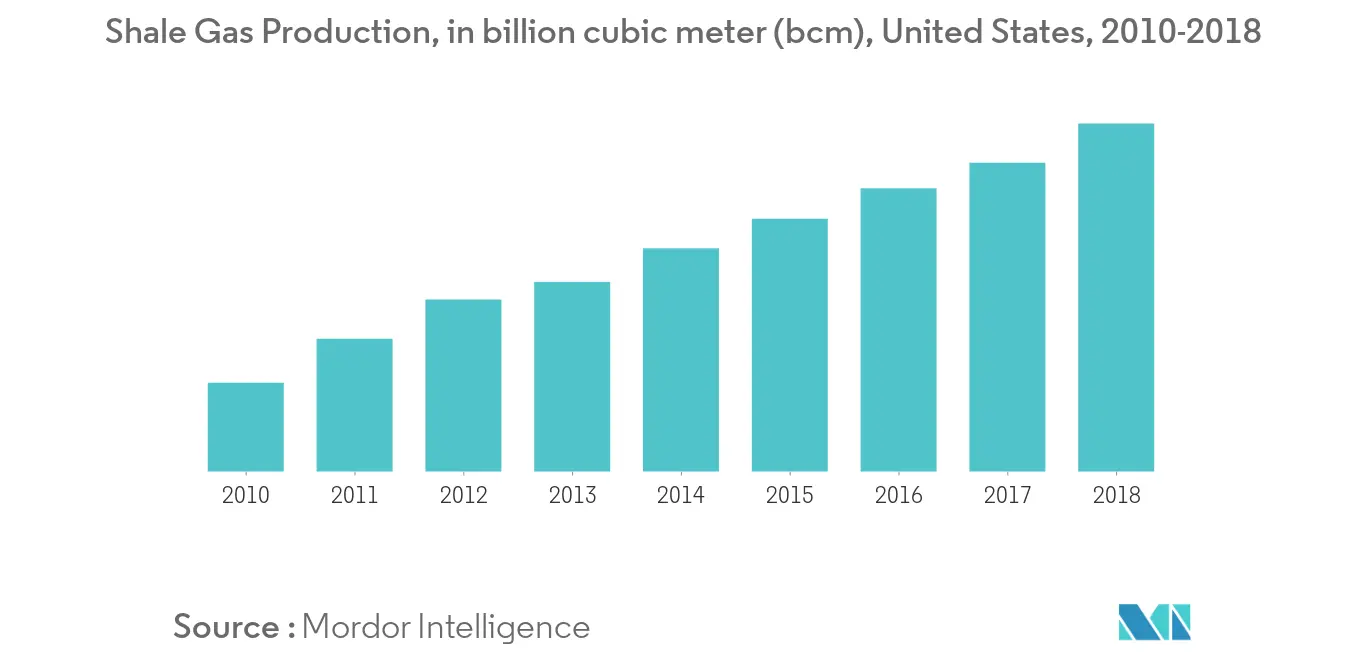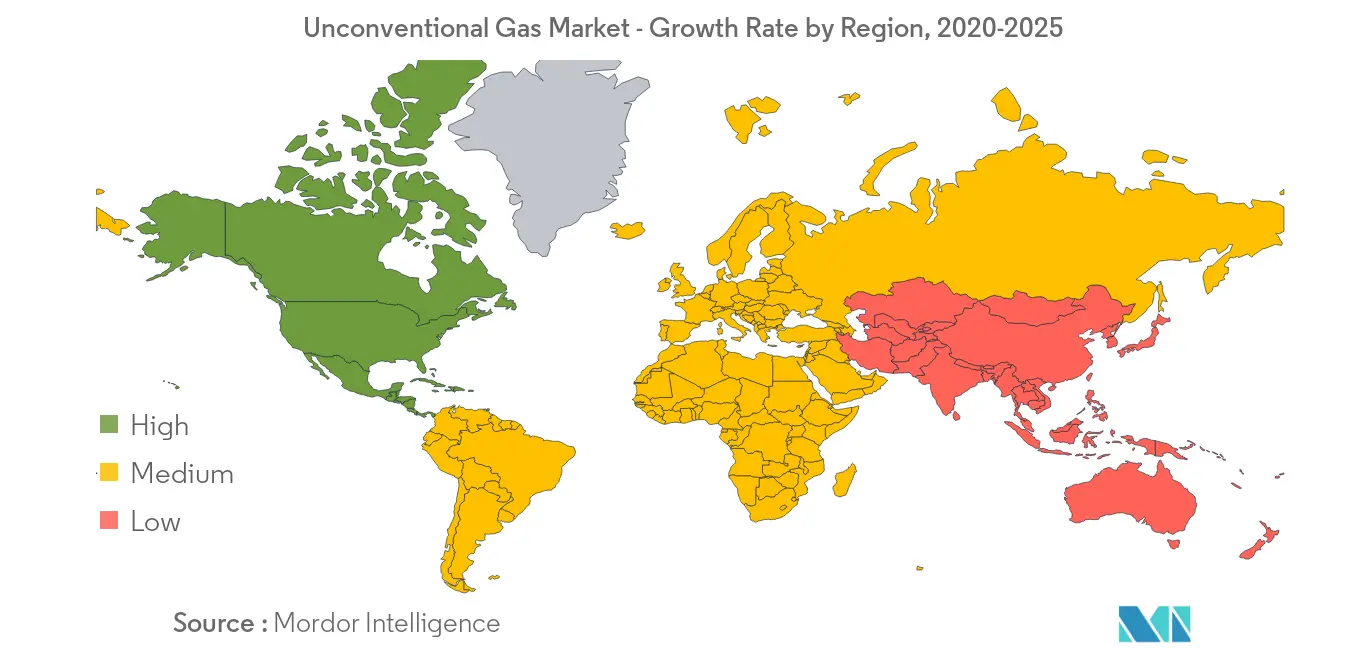Market Trends of Unconventional Gas Industry
This section covers the major market trends shaping the Unconventional Gas Market according to our research experts:
Shale Gas to Dominate the Market
- Natural gas prices are down in some regions, and fluctuate repeatedly, and the unconventional gas prices could drop even farther.
- However, oil and gas production from conventional sources continues to decline because of an increase in the number of maturing fields. As the demand for natural gas is anticipated to rise in the future, the price of natural gas is also likely to rise, which, in turn, is expected to be instrumental in the investment decisions for exploration and production of unconventional gas.
- Unconventional sources of gas gained much attention of late, due to their significant contribution to gas production in the United States. Recently, Argentina, Australia, Poland, and China are either planned to explore and produce unconventional gas or are already in the business of unconventional gas.
- Countries, such as Saudi Arabia, Qatar, Kuwait, Iran, and Nigeria, are concerned about the rapid development of unconventional gas, primarily shale gas, because the economies of these countries depend upon the oil price.

North America to Dominate the Market
- In 2018, EIA estimate that only the US had produced 20.012 trillion cubic feet of natural gas from shale and Coal bed methane (CBM).
- The United States now wants to increase its exporting capacity by developing more advanced infrastructure in transportation and increase its share in the natural gas exporting market.
- Canada is known to have significant conventional gas reserves, and the country was a key supplier of natural gas to the United States for decades until the recent shale boom in the United States. However, with conventional natural gas sources in decline, the Canadian industry is turning to unconventional sources, including shale gas.
- Many oil and gas industries are now exploring and developing shale gas resources in Alberta, British Columbia, Quebec, and New Brunswick, which could balance the difference in shale gas production in the coming future.


